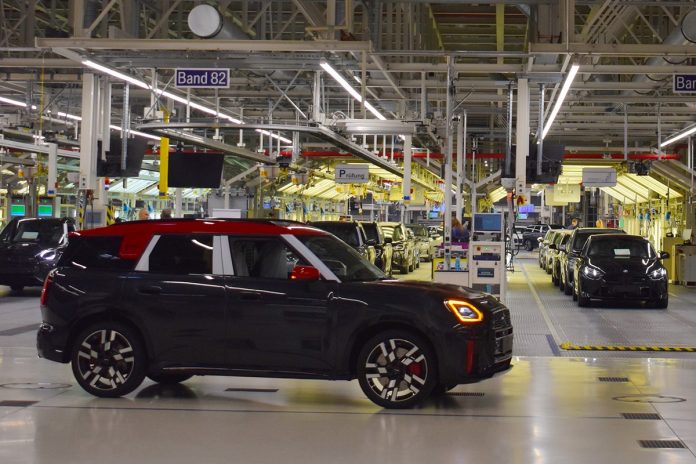The BMW Group is testing a new Automated Driving In-Plant (AFW) capability for new vehicles produced at its European plant in Dingolfing, Germany. While having initially been launched as a pilot in 2022, the project is now transitioning into a more comprehensive series operation. This transition will also see preparations made for the BMW Group’s Leipzig plant to implement the AFW technology in series operation, with further facilities across its production network to follow in stages.
In addition to the BMW 5 Series and 7 Series in Dingolfing, this technology is now also being used for the Mini Countryman and other BMW models in Leipzig. In Dingolfing, the new vehicles drive autonomously along a route of more than one kilometre; from the two assembly halls, through a short test course, and finally to the plant’s finishing area.
These autonomous capabilities are made possible by sensors that are installed along the route which, themselves, rely on an externally generated environment model and an external movement planner. Irrespective of the vehicle’s on-board equipment, this system controls its automated movements using cloud architecture. Parts of the technology were provided by Embotech, which the BMW Group previously collaborated with in the early stages through its venture client unit, the BMW Start-Up Garage.
At Plant Leipzig, the Group plans to introduce automated driving for around 90% of the BMW and Mini models built there, with Plants Regensburg and Oxford set to follow in 2025. The new BMW site in Debrecen, Hungary, will also implement the technology from the official launch of series production.
Going forward, the BMW Group plans to expand its use of Automated Driving In-Plant to further areas of production, envisioning it driving new vehicles through the testing zone and in outdoor distribution areas. The OEM’s production and development staff are working closely together to refine the technology in-house, a practice that will involve increasing the use of on-board technology to support the external sensors in the long term.














